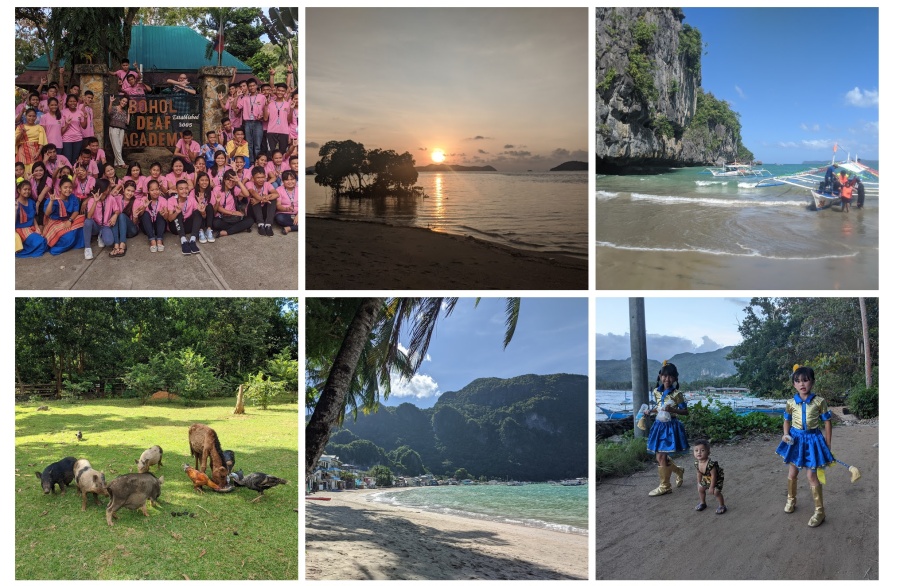
30 Days in The Philippines
I spent most of November in The Philippines with my girlfriend - let me tell you all about it!
The Philippines are composed of 7,641 islands, of which we visited five large ones (Cebu, Bohol, Busuanga, Linapacan, and Palawan) and about nine small ones.
By the 1300s, there was a number of large coastal settlements that had substantial trade ties with other societies in the region.
The islands were named Las Islas Filipinas in honor of Philip II of Spain in the 16th century. This is something that President Rodrigo Duterte publicly pondered recently. Why the heck should the islands still be called the Philippines in honor of a long-dead king of a faraway former colonial nation? Not even Duterte had a suggestion for a new name, though, so here we are.
The Philippines were ceded by the Spanish to the US in 1898 following the Spanish-American war, and became a self-governing commonwealth in 1935. The country was occupied by Japan in 1942. US forces and Filipinos fought alongside to regain control, and the Republic of Philippines attained its independence in 1946. There was 21-year dictatorship that ended in a “people power” movement in 1986, and the country has been a democracy since.
The Philippines
- Population: 100,000,000
- Overwhelmingly Catholic
- Human Development Index (HDI): 0.7 (113th in the world)
- GDP per capita (at Purchasing Power Parity - PPP): $9,538 - 119th in the world; growing at 6.2%
The Drug War
I would be remiss if I didn’t mention the President, Rodrigo Duterte, and his drug war. Both the president and the drug war are controversial and divisive.
From Wikipedia:
- “the policy is aimed at ‘the neutralization of illegal drug personalities nationwide.”
- “Duterte has urged members of the public to kill suspected criminals and drug addicts.”
- Research by media organizations and human rights groups has shown that police routinely execute unarmed drug suspects and then plant guns and drugs as evidence
- death toll estimates vary between 5,104 to 12,000+ as of January 2019
The drug war didn’t come up except when I asked people about it, and then opinions on it varied widely. Some 82% of Filipinos support it in the name of progress against drug use and drug criminals.
On the other hand, some people said that drug use is getting worse, as is corruption, and that Duterte uses the killings to suppress opposition. They are concerned that the extra-judicial killings will create a bitter, angry, violent generation that grows up through this - there are reports of people unarmed people being executed by police inside their homes, in front of their children. What does seeing that do to the life of the child?
The movement and freedom of expression of journalists has been limited (and many foreign ones prevented from entering the country), and some journalists have even been killed under mysterious circumstances, so hard facts are hard to come by.
I had one person - let’s call him Paul - tell me passionately and at length how and why Duterte was the worst president in the history of the Philippines. Paul says that corruption is getting worse, and that the suppression of opposition through the drug war is aggravating matters. He says incompetent insiders are getting cushy government jobs, low-level criminals are executed in their homes while the high-level criminals are protected by high-level police officers (the chief of police was recently sacked for this). Paul also says there is talk of amending the Constitution to allow Duterte to run for a second term - and that sounds worrying indeed.
Paul told me a story of how he overstayed the 5-minute parking limit outside of a laundromat. When was walking back to his car, there was a police officer waiting for him, who told him that he was going to give him a ticket for overstaying the parking limit. “OK,” said Paul. Here’s how the conversation went from there:
- cop: “Well, it’s not really that serious.”
- Paul: “It’s OK.”
- cop: “Maybe we can resolve this another way.”
- Paul: “No, please write the ticket.”
- cop: “It would cost you a lot less if we were able to resolve this another way.”
- Paul: “No, I want the ticket. Please write me the ticket.”
- cop: …
- Paul: “What is your name? What is your badge number?”
- cop: runs away
I had another person, John, talking to me about police corruption. John spent some time working in Dubai, and he discussed the differences between traffic enforcement in the two countries. It’s very orderly in Dubai. There are cameras everywhere, and fines are automatically issued electronically. For example, if you speed, an officer doesn’t pull you over. You get a text message saying that you were speeding (along with a photo or other evidence), and the fine is added to your next annual registration renewal. This lack of one-on-one interaction between driver and officer completely eliminates a common form of corruption. John spoke of Dubai’s system in admiring terms.
But enough about this - I was on vacation!
Cebu
Cebu City is the second largest city in the country, and a hot mess of terrible traffic… though apparently it is significantly better than Manilla. The airport, too, is rather pleasant - in contrast to Manilla, which some claim is the single worst airport in the world. And so we never even visited Manilla.
In Cebu City, visit the Jumalon Butterfly Sanctuary And Art Gallery. It’s a huge collection of butterflies and artwork made from butterfly wings - lepido mosaics - built at the former residence of the influential late lepidopterist Prof. Julian Navarro Jumalon. We got a private tour from his daughter, who now runs the museum. You can quickly tell that the museum is a showcase of a lifetime of passion about butterflies; it is definitely worth a visit.
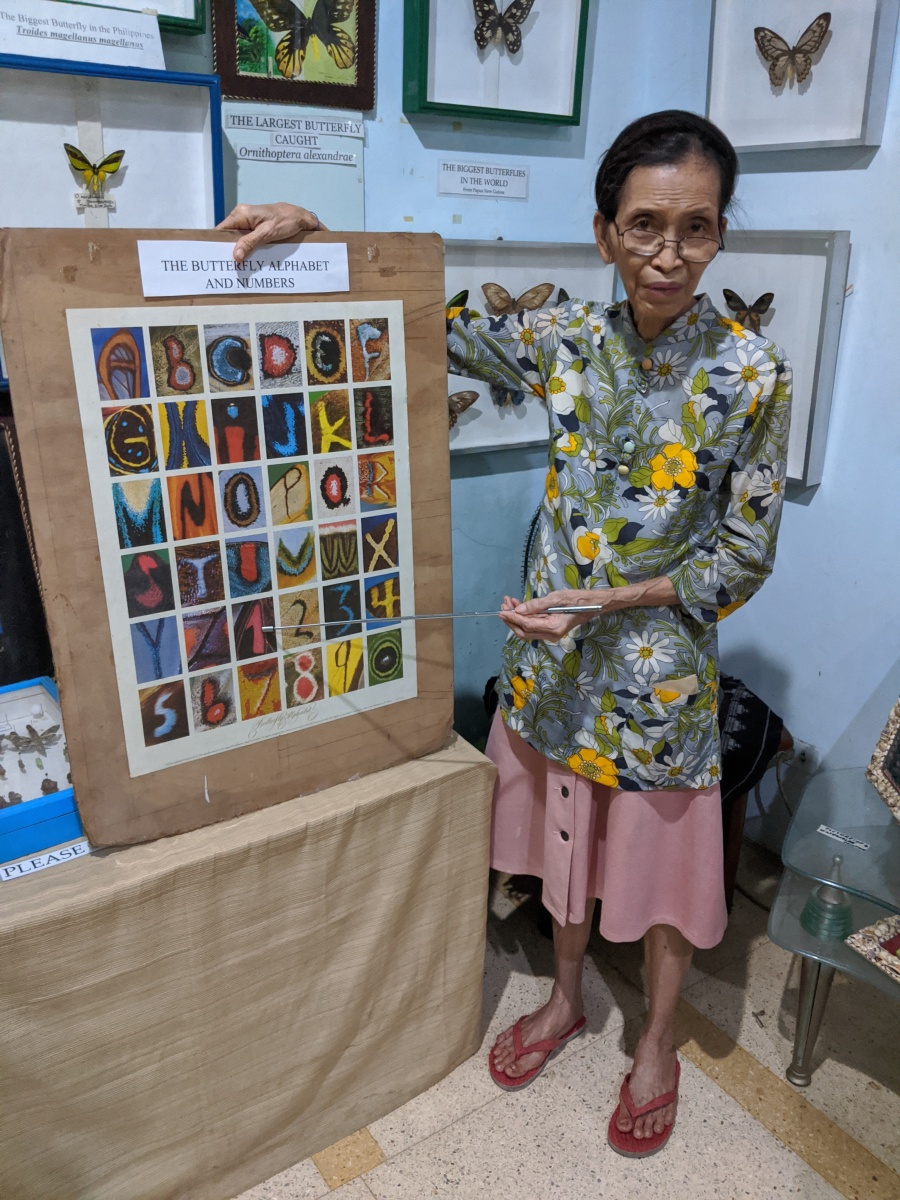
We took a trip for a few days out to Badian; the main attraction for us there was canyoneering to Kawasan falls.
It was super fun; quite possibly the most fun I’ve had since the start of my travels a few months ago. After hiking in to a narrow gorge in the rainforest, we made our way down through the canyon via a series of pools and waterfalls, swimming, jumping, and sliding as appropriate. The tallest waterfall and jump was 12-meters high - good fun. There were also sections where we floated down the stream just under a rock overhang, almost (though not quite) in a cave.
So, you might be asking, where’s the video? Well… I experienced some very ill-timed equipment failure. Rather than giving you a bunch of excuses, let me instead give you someone else’s video:
We did the trip through Kawasan Canyoneering, and they did a great job with everything. There are many other companies that organize trips.
The bottom line is this: if you’re in The Philippines, definitely go canyoneering at Kawasan falls. You won’t regret it.
The owner of our small guest house, located well off the beaten tourist track, asked us, “You know the actor Jason Statham?” Beaming with pride, he said, “he stopped by last week! He bought a lot of beer.”
Bohol
In Bohol we visited a couple of deaf schools - the Bohol Deaf Academy (BDA - a residential high school), and the program for the deaf at Loon South Central Elementary School.
The Bohol Deaf Academy sits on top of a (small) hill. When our tricycle arrived at the bottom of the hill, the driver stopped in the middle of the road, looked at the hill for a few seconds, and then looked imploringly at me. “We can walk from here,” I said, smiling, and handed him some cash and got out.
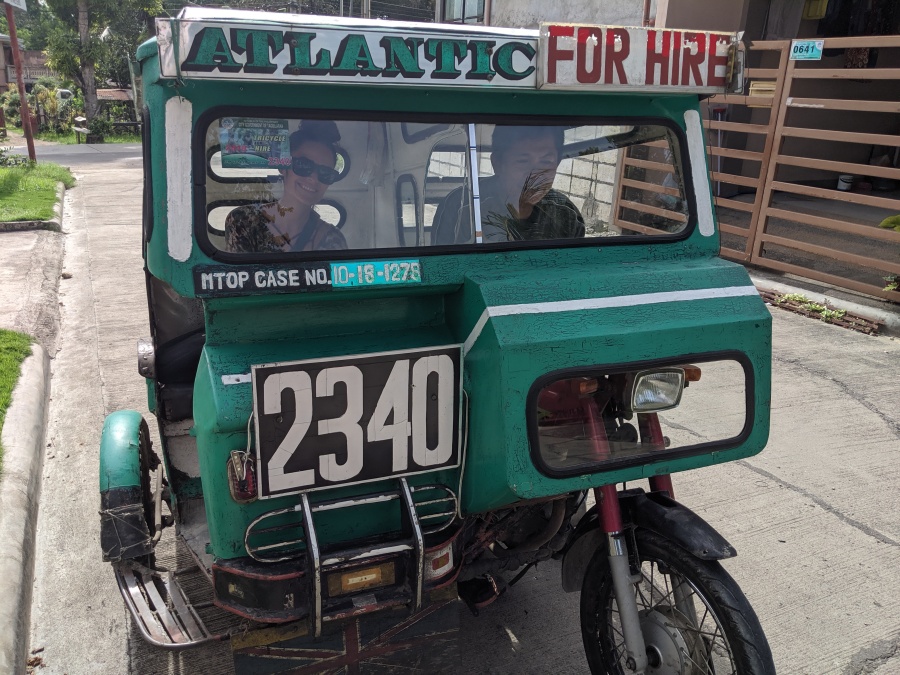
The schools are organized under the IDEA Philippines umbrella. Historically, the organization has relied on sponsors for support, but Dennis, the founder, has been working hard to make it self-sufficient through various businesses set up under the umbrella. These now include a hotel, a restaurant, a fishing lure/fly manufacturer, and a construction company. Not only do these businesses generate funding for the schools, but they also provide jobs for the schools’ graduates.
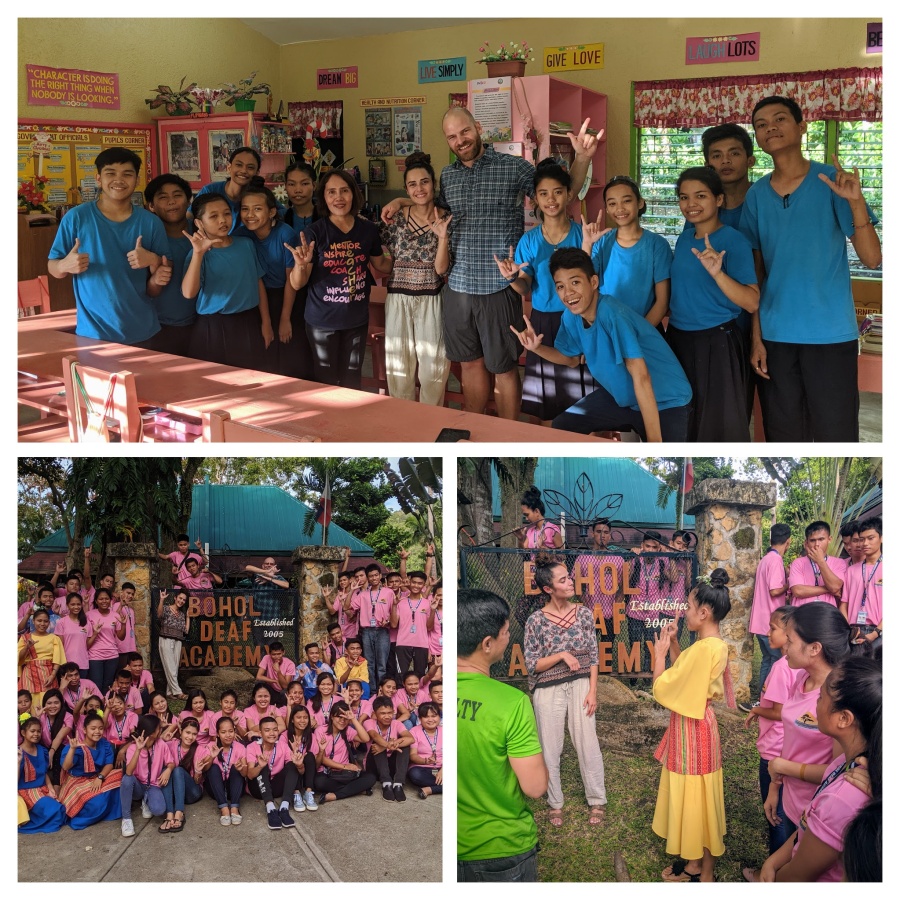
We rented a scooter for 400 pesos for a day - about $8. The scooter was actually in great shape, too! The helmets, though, not so much. I had been warned prior to travelling here (“here” being the “cheap” parts of Asia) that the helmets are “garbage” here… and I don’t disagree.
We visited the Tarsier Sanctuary on the island. Tarsiers are nocturnal hunters about the size of a man’s fist, and a single one of their eyes is larger than their brain:
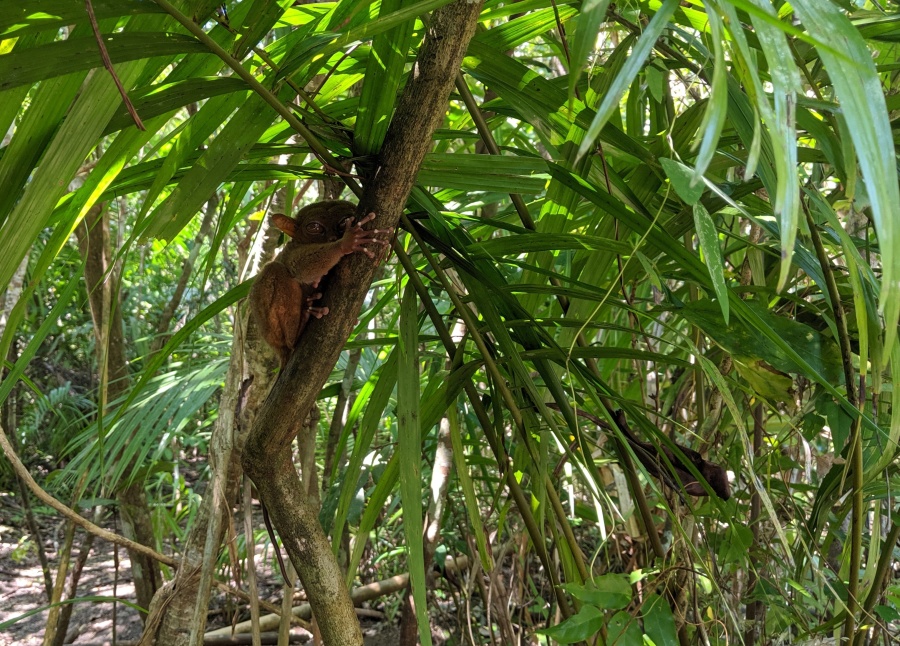
Futher inland are the Chocolate Hills, so called because they turn the color of chocolate in the dry season:
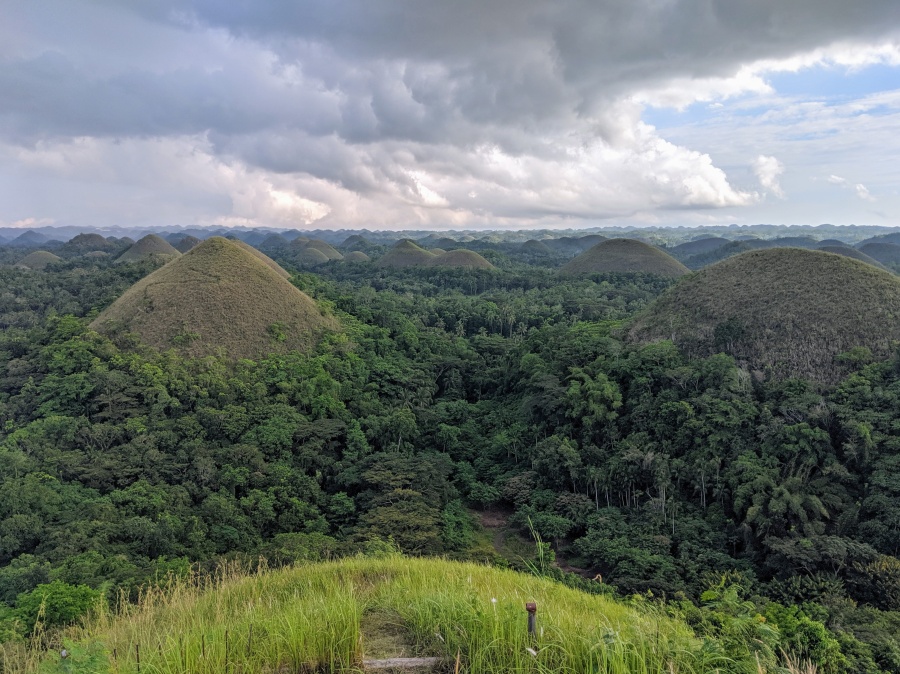
The Garden of Eden on Busuanga
From Bohol we took a ferry back to Cebu, and then hopped on a plane to the island of Busuanga, where we stayed in the Garden of Eden - an isolated farm in the middle of the island.
The farm is owned and run by Gunther and Eden. Gunther moved to the island from Germany some 30 years ago - at the time, his plan was to travel Asia until he ran out of money. He ended up starting some businesses in Busuanga and never did run out of money… and so he’s still there. Eden grew up on a farm on another island in the Philippines.
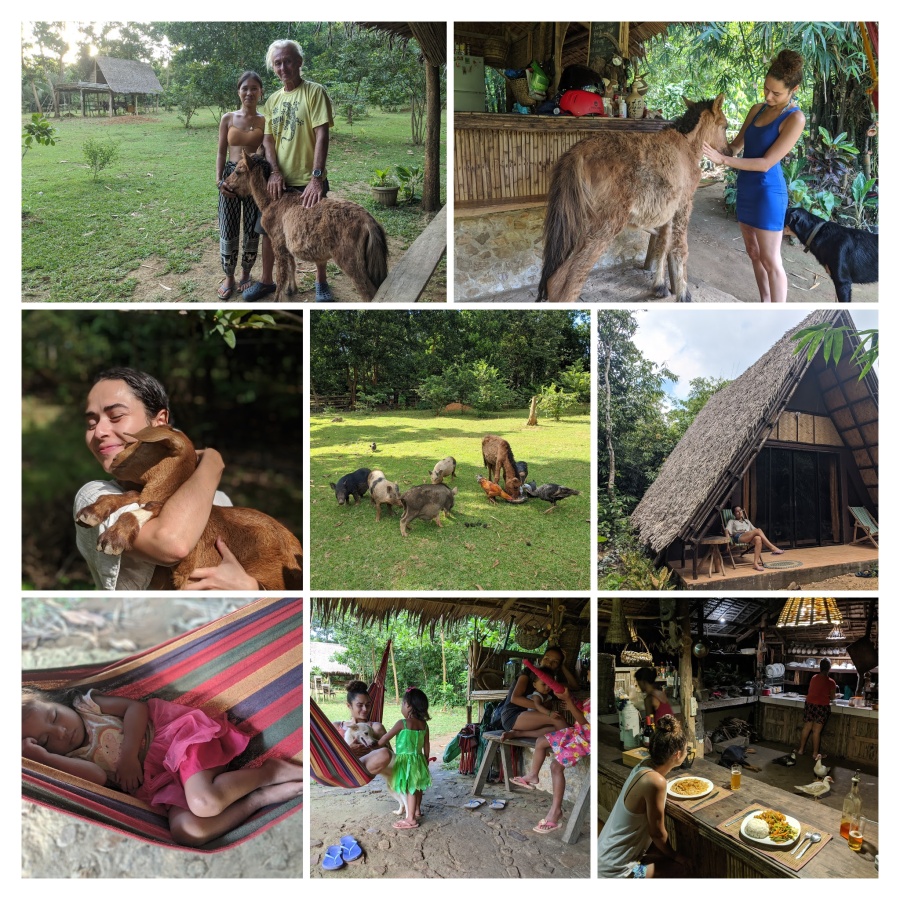
The farm is “sustainable and eco-friendly”. That to Gunther means that no animals live in cages or have leashes, and only the plants that mother nature wants to grow in the Philippines are grown. If something is tough to grow… they don’t grow it. The things that are supposed to grow in the climate grow on their with only minimal care, they say. Much of the food we ate, including all of the fruits and vegetables, as well as the coffee, is from the farm.
There are many animals everywhere, including young ones: a baby horse, a baby goat, lots of piglets, and we watched Boa the Doberman give birth to eight beautiful big healthy puppies.
At dusk, everyone gathers around the kitchen, and Eden feeds us all in turn: first the guests, then Gunther, then the various gathered relatives and neighbors, then the cats, then the dogs, then the geese, and only then, once everyone else is full, Eden finally feeds herself. What steel resolve, I thought.
As she sits down with her food, though, Eden says with a conspiratorial smile, “I have a secret. I also eat before I start cooking.” and she breaks out into laughter.
You can find the Garden of Eden of Busuanga on Airbnb here.
Tao
From Busuanga we went on a five-day boat journey south to El Nido on Palawan with the folks from Tao.
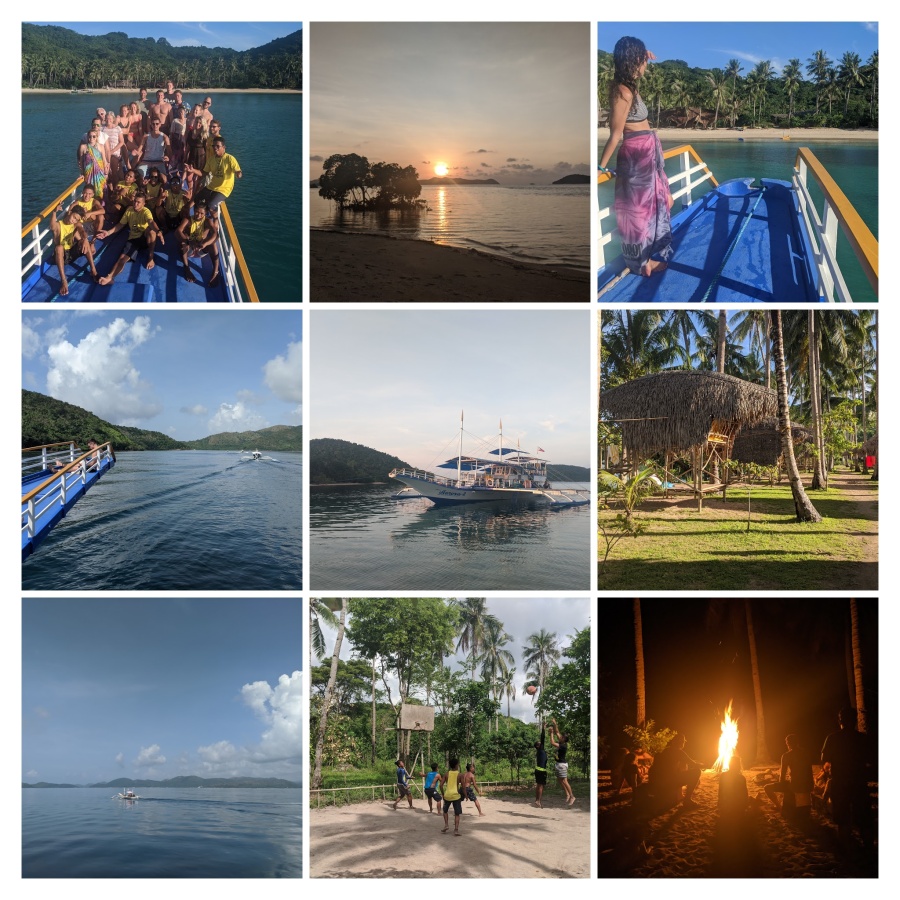
We spent the days on a boat, moving between various islands and snorkeling and relaxing. At night, we slept in rudimentary bamboo huts on various islands. Highlights of this trip include free-diving through the ribs of a sunken Japanese WWII shipwreck and snorkeling over beautiful reefs teeming with fish (and some turtles!).
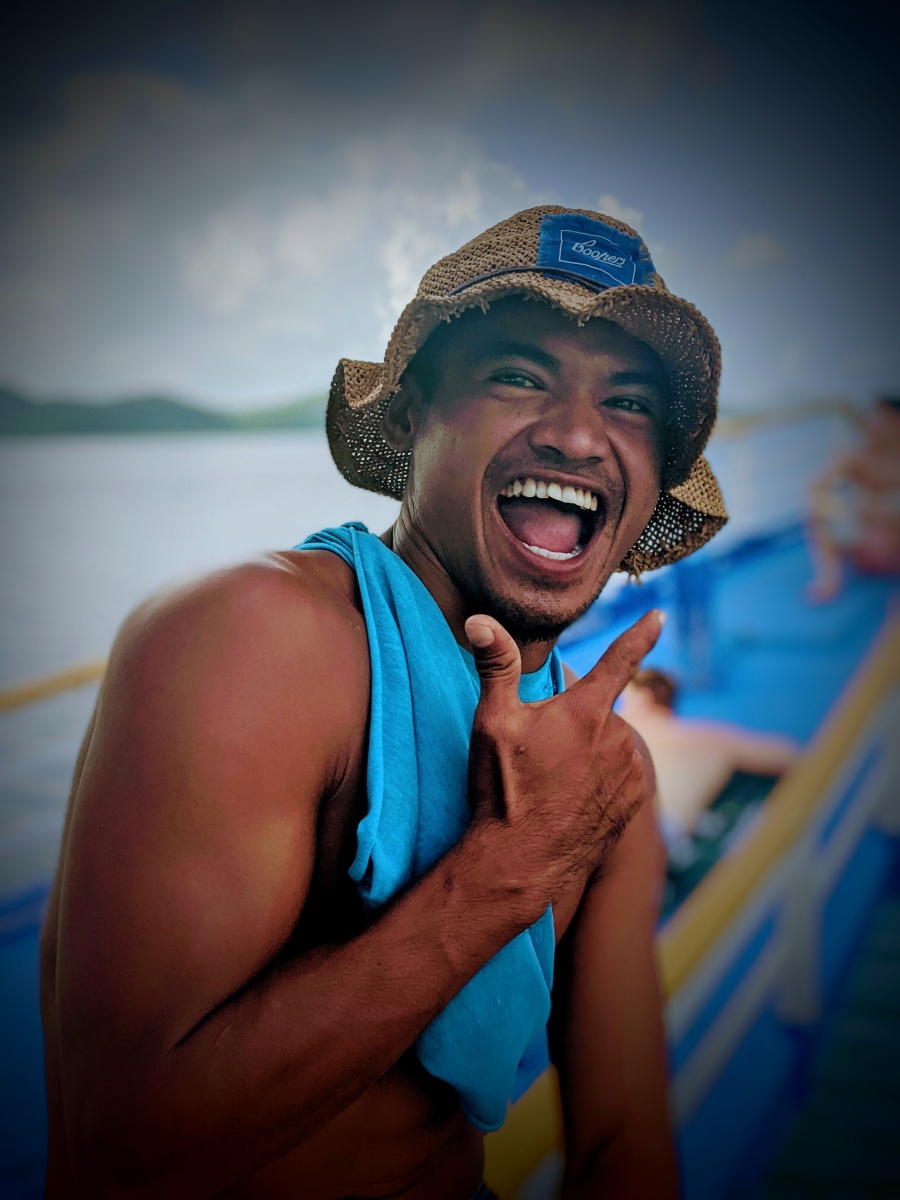
The team leader of our expedition was Dodo. He likes martial arts (Muay Thai and boxing), and his big dream is to go snowboarding - though so far he has never left the Philippines, and thus has never seen snow. I watched Dodo climb a 30-foot palm tree with ease and knock down a bunch of coconuts for us. Aying, another crew member, says, “we are civilized monkeys”.
Palawan
From Tao we arrived in the picteresque town of El Nido on the island of Palawan, known for its white-sand beaches, coral reefs, and limestone cliffs.
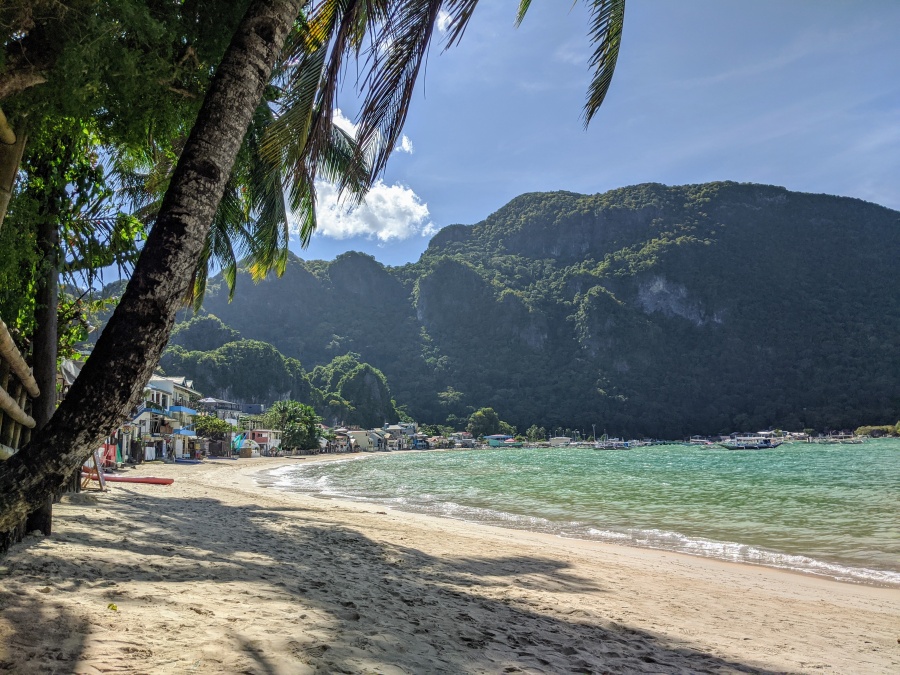
From there we travelled south to visit the Puerto Princesa Subterranean River - which at over 5 miles of river underground is one of the longest such rivers in the world, with 2.7 miles of the river navigable by boat from the sea.
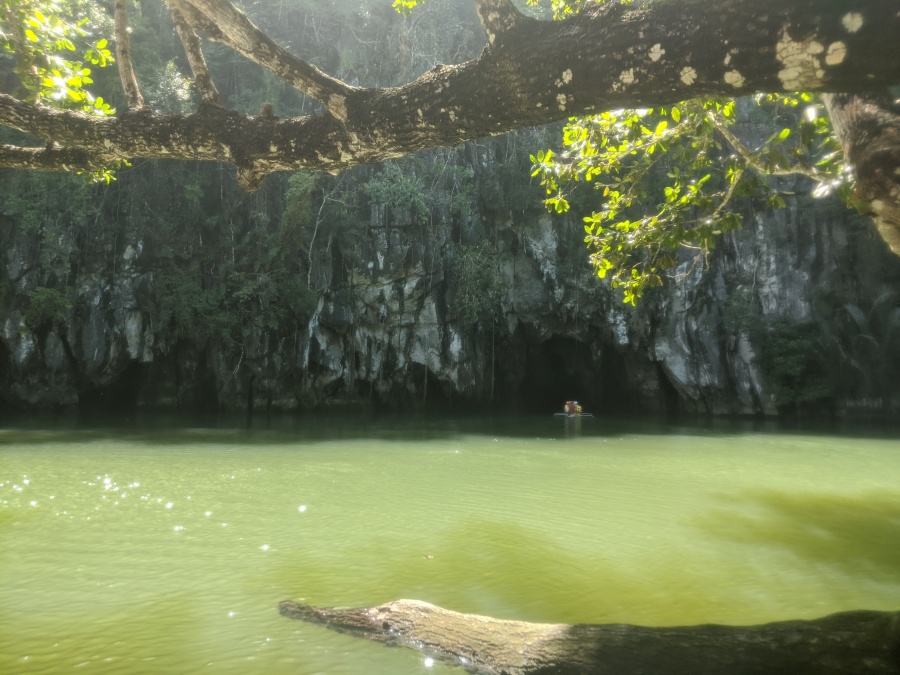
We hiked the way back to the nearby town of Sabang, following a guide - Jing.
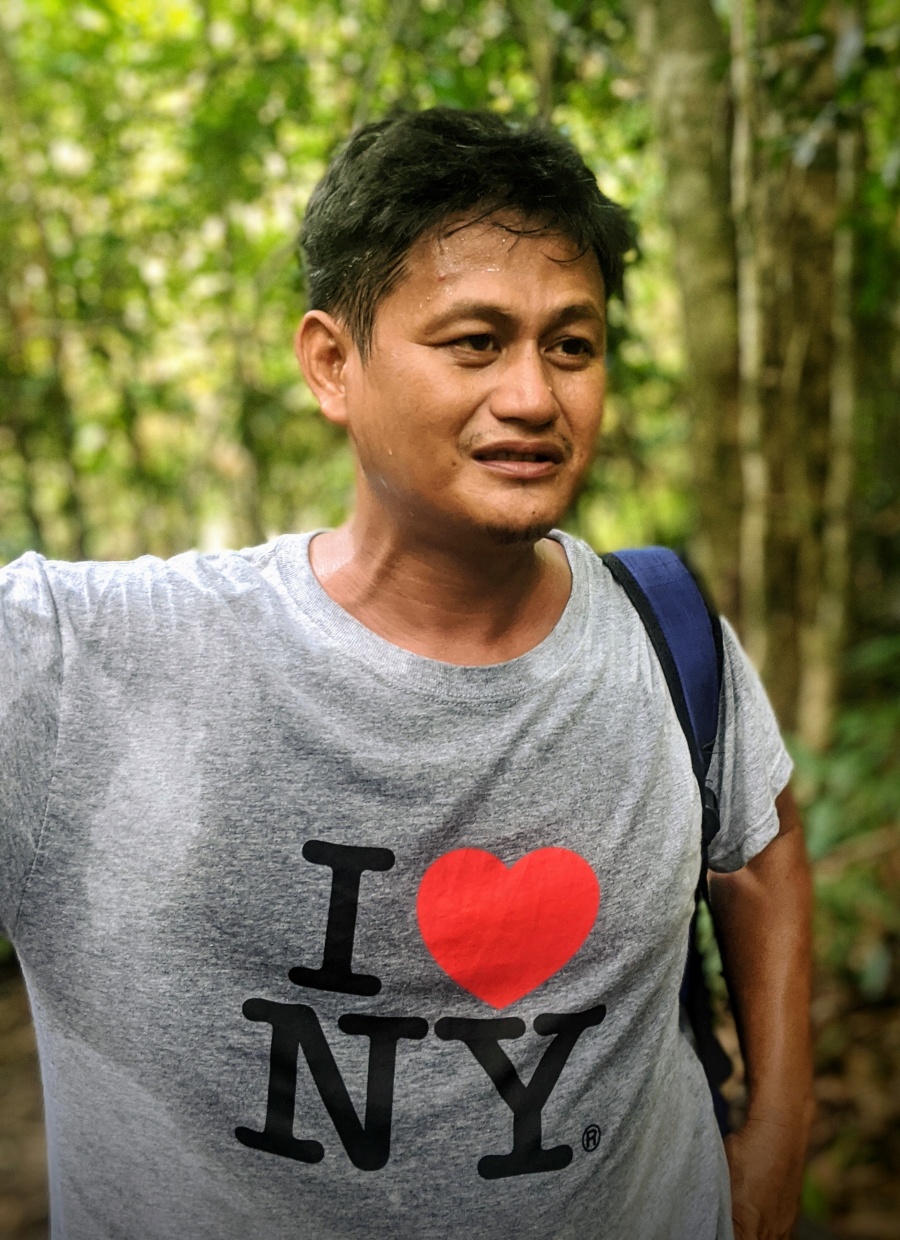
Jing is from the Tagbanua tribe, which lives in a village on a mountain about a 2.5-hour trek from the town. The tribe consists of about 300 people, of whom about 20 count as Jing’s family. Jing says the family share one house, consisting of just one (large) living area / bedroom.
Jing makes about 3,500 pesos ($70 USD) per month guiding tourists through the jungle. He says that it’s very cheap to live in the village, though: there is no electricity, water is free, and they grow and hunt most of their food.
Jing says he learned English in the jungle - when he started guiding five years ago, he only knew “yes” and “no”. Many kids from the village don’t finish school - it’s expensive for them (5,000 pesos per year for elementary school, and 10,000 pesos per year for high school), and it’s a very long trek through the jungle - the kids need to leave the village by 5am to get to school on time. He says there is talk of the government funding a school right in their village soon, but he’s not sure if it will happen.
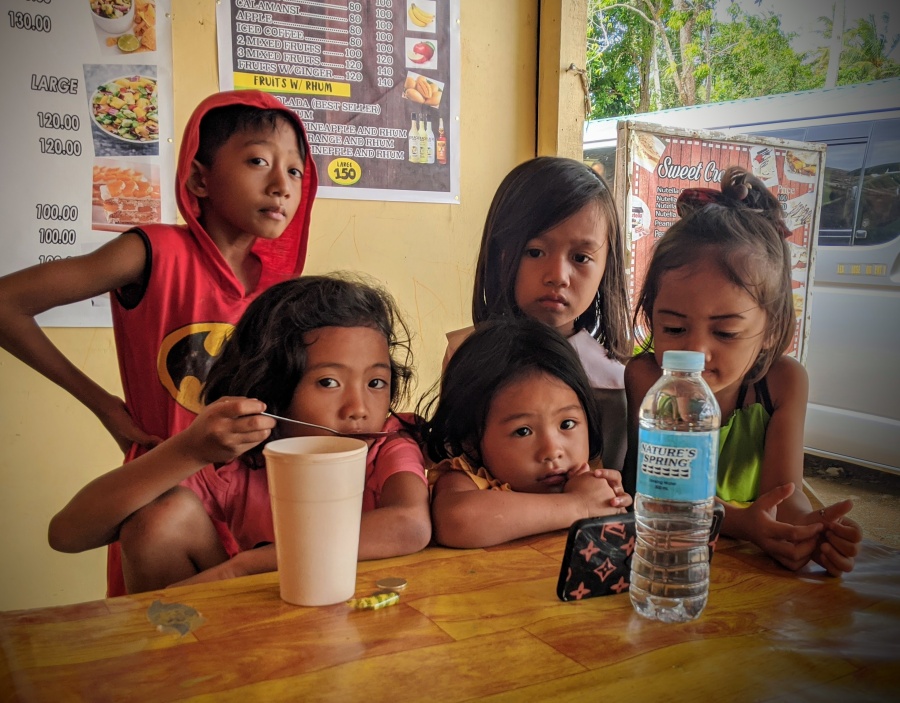
After Sabang we took a van down to Puerto Princessa, a plane back to Cebu City, and then another plane onwards to new adventures.
Jeepneys and Tricycles
Let’s talk about jeepneys. The jeepney is a filipino cultural icon. They are buses, and the most popular and ubiquitous means public transportation in the country. Per wikipedia, “They are known for their crowded seating and kitsch decorations, which have become a wide spread symbol of Philippine culture and art… Jeepneys were originally made from U.S. military jeeps left over from World War II.
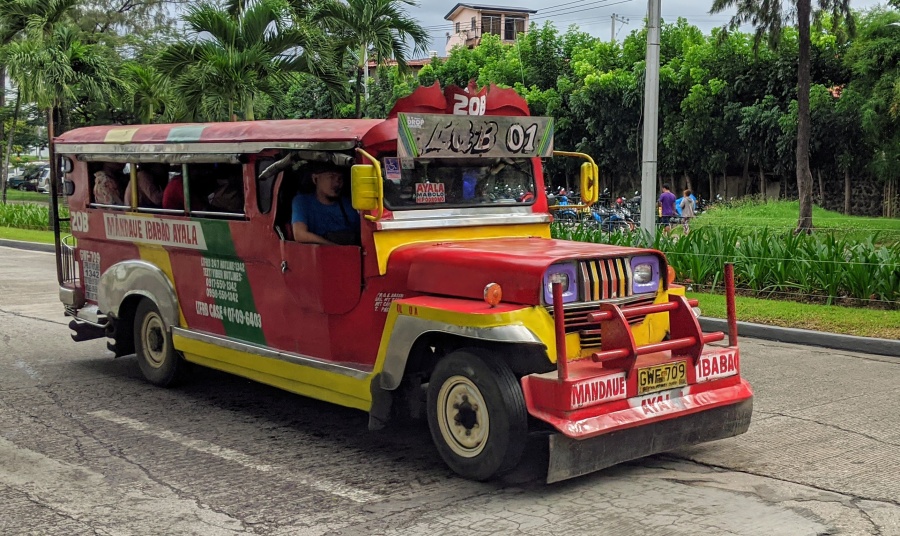
If you need short ride and can’t use a public jeepney for any reason, the most common way is to use a tricycle.
Both of them get filled up to overflowing at rush hour - people standing on small platforms on the backs of the buses, and hanging on. I’ve also seen up to 8 people on a tricycle - driver, two more people on the back of the bike, three people in the “cabin”, and another two on the back outside part of passenger compartment. It’s pretty amazing.
The tricycles are old small 125cc bikes that really struggle under the weight. I doubt they can go faster than 25mph. The brakes on the bikes are also woefully insufficient to provide any kind of reasonable stopping power for the weight of the tricycle - the brakes squeal like mad, and the bike slows down only very gingerly. Traffic is very heavy, though, and also moves only gingerly, so generally it seems to work out OK. Each of the tricycles has a verse from the Bible written on the back.
I consider the tricycles a pretty bad solution, though, so here’s an idea: design a public domain (open-source), extremely cost-effective 4-wheeled vehicle to replace them. I am thinking something similar to a WWII Jeep - small, versatile, adaptable, easy to maintain and repair. An easily-removable canvas roof, optional and removable doors, no side windows, seatbelts, a rear compartment that converts quickly and easily between carrying passengers and carrying cargo.
Making it open source would allow it to be manufactured and maintained anywhere and everywhere there’s a need, creating and supporting local job ecosystems.
It would be vastly safer and more comfortable than the tricycles, provide vastly more utility, and be better for the environment. It wouldn’t need to be high-tech - in fact, it shouldn’t be, for simplicity, maintenance, and cost reasons.
How cheaply can such a vehicle be built?
Please get in touch with me if you have any unique insights into this idea!
Miscellaneous Observations
People love Christmas in The Philippines, and when I say that, I mean it goes deeper than what we’re used to in the US or Europe. They like to say here that for them, Christmas is a “-ber” month affair - meaning they celebrate during all of the months ending in -ber - September, October, November, and December. Indeed, by the time we arrived in early November, Christmas decorations were up in many places, and some hotels were playing Christmas music around the clock in their lobbies.
People love basketball here, too. Whenever I mentioned I’m from LA, people talked excitedly about the Lakers and Lebron, and even Kobe and Magic. When I asked people what their favorite team is, I think more than half said “Lakers”. Nice! Me too! High-five!
Manny Pacquiao is hailed as a hero of the people. He’s on posters all over, and people hold him in the highest regard. In addition to being one of the greatest boxers of all time, he’s now also a senator.
Here’s something amazing - Hyped Mangoes:

They have only one flavor: mango. This they serve in various combinations of smoothie, sauce, and chopped fruit. Their signature Hyped Mango includes all of the above, plus some caramel sauce and crushed graham crackers. It is crazy good. After trying it once, we looked for a stand everywhere we went. Bring it to the US and make a killing!
Comments